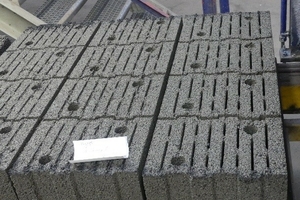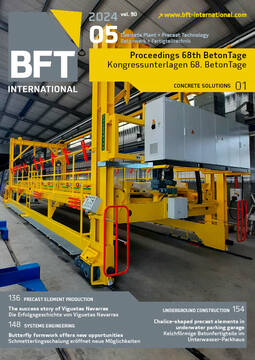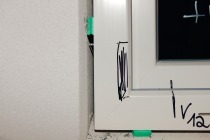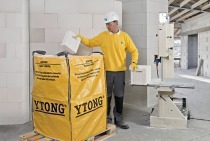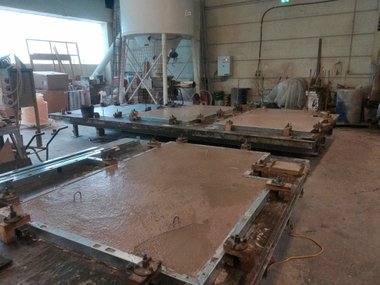Replacement of natural lightweight concrete aggregates with recycled material
In the Eifel region, pumice has been a “constant” in the production of lightweight concrete blocks for many decades. More recently, however, there has been a significant decline in production quantities, which is in part due to the decrease in available raw materials. This makes it necessary to look for alternative raw materials, which has been the subject matter of research projects and modeling approaches. On the one hand, pumice concrete from existing structures can be used by processing pumice concretes from demolition in such a way that they are suitable for reuse in the production of lightweight concrete blocks. A second option is to use pumice concrete waste from demolition but also from ongoing production as a raw material for the manufacture of lightweight aggregates in a thermal process. A third option is to use other construction materials with low bulk densities as lightweight aggregates. The processing of ideally unmixed pumice concrete blocks from demolition is currently carried out in plants used for the processing of demolished concrete and masonry. In contrast to recycled materials made from ordinary concrete, the density of which decreases compared to that of the original aggregates due to hardened cement paste adhesions, the bulk density of lightweight concrete increases due to the destruction of at least the coarser pores. When using these “second generation” aggregates in the production of concrete blocks, this causes an increase both of the bulk density and of the properties strongly influenced by the bulk density, such as strength and thermal conductivity. The reuse of pumice concrete waste as a raw material for the production of lightweight aggregates is based on a thermal process for the reuse of heterogeneous demolished masonry [3]. In a process similar to the production of expanded clay, the crushed and ground source material, doped with an expansion agent, is first granulated and then treated at temperatures of around 1.200 °C in a rotary kiln. The resulting product is a lightweight aggregate with bulk densities similar to those of expanded clay. On a pilot-plant scale, it was demonstrated that pumice concrete waste is also suitable as a raw material for lightweight aggregates in lieu of demolished masonry. For block production at a pumice concrete plant, several cubic meters of such “secondary pumices” were produced on a pilot-plant scale and then used to produce “secondary lightweight concrete blocks”. Compared to the lightweight concrete blocks produced from 80 M.-% of primary pumice aggregates and 20 M.-% by mass of commercial lightweight aggregates, the lightweight concrete blocks consisting of 100 % of secondary pumices exhibited lower bulk density and thermal conductivity values. They complied with block strength class SFK 2 according to DIN 18152-100 [4].
As regards the use of mineral construction wastes with low bulk density values as lightweight aggregates in pumice concrete production, estimates were made for unmixed autoclaved aerated concrete wastes, since autoclaved aerated concrete and pumice have similar bulk densities. Autoclaved aerated concrete aggregates have bulk densities ranging between 500 – 940 kg/m³ [2]. The bulk densities of pumice range from 400 – 1,400 kg/m³ [5]. Consideration must be given to the fact that autoclaved aerated concrete contains sulfate. The sulfate contents, measured on a total of 12 factory products, range between 1.95 – 3.42 M.-% [6]. The recommended maximum acid-soluble sulfate content of natural, lightweight and recycled aggregates for the production of lightweight concrete blocks is 0.8 M.-%. Therefore, the maximum addition of autoclaved aerated concrete that does not result in the mix exceeding the sulfate limit is 25 m.-%. In addition to “stretching” the supplies of pumice aggregates, this would result in a recycling option that is “true” to autoclaved aerated concrete wastes.

